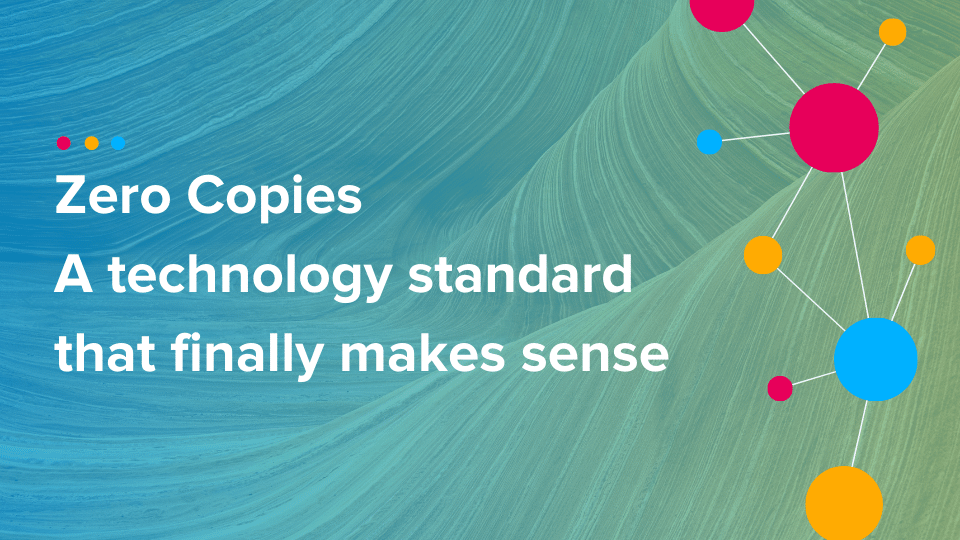A bold new approach to digital innovation defined by control and collaboration
In today's digital landscape, organizations are dealing with an ever-increasing amount of data that is fragmented across various systems, databases, and applications which has created a growing challenge to data privacy, data governance, and IT efficiency.
This is the result of close to 40 years of an approach to digital technology development that’s perhaps best described as follows:
An app for everything and a database for every app (and copies exchanged between the silos to reconnect the data for new projects)
The negative impacts of this ‘app-centric’ approach are far-reaching and significant:
- Consistent enforcement of access controls is extremely difficult, if not impossible
- Correction and deletion of data is extremely difficult, if not impossible
- Precision auditing of data usage is extremely difficult, if not impossible
- Porting data from one environment to another is extremely difficult
- Delivering IT projects is hampered by ever-increasing data integration
- Progressing self-serve data and democratized IT is blocked by data silos and complexity
In fact, the problems associated with the proliferation of application silos and copy-based data integration have become so ingrained in today’s IT operations that it has become difficult for many technologists to even imagine an alternative.
Changing how change is delivered
In December 2022, the Standards Council of Canada ratified Zero-Copy Integration, a framework to accelerate the delivery of digital innovation projects – including applications, automations, AI/ML, and analytics – while navigating increasingly strict data protection regulations, such as Canada’s proposed Consumer Privacy Protection Act (CPPA), Europe’s General Data Protection Regulation (GDPR), and the California Privacy Rights Act (CPRA), as well as the escalating risk and inefficiency associated with data silos and copy-based data integration.
Dan DeMers, CEO of Cinchy and member of the Technical Committee which developed the standard stated:
“With Zero-Copy Integration, organizations can achieve a powerful combination of digital outcomes that have always been elusive: Meaningful control for data owners, accelerated delivery times for developers, and simplified data compliance for organizations. And of course, this is just the beginning–we believe this opens the door to far greater innovation in many other areas.”
The Digital Governance Standards Institute, Canada's only accredited digital governance standards development body that developed the standard is currently implementing plans for the advancement of Zero-Copy Integration within international standards organizations.
Core principles
Zero-Copy Integration outlines an approach by which CTO, CIOs, data architects, and application developers can establish digital innovation projects defined by increased control, efficiency, and collaboration:
- Data management via ‘zero-copy’ shared data architecture e.g. dataware
- Data sharing via access-based data collaboration
- Data protection via universal access controls set in data layer
- Data governance via data products and federated stewardship
- Prioritization of ‘data-centricity’ and active metadata over complex code
- Prioritization of solution modularity over monolithic design
Enterprise transition
By focusing on a super-efficient approach to the development of new digital solutions, Zero-Copy Integration supports a project-by-project approach to steadily reduce an organization’s data silos, data integration, and complex code, and thereby avoids the shortcomings of ‘rip and replace’ approaches that fail to accommodate pre-existing digital solutions and IT investments.
Instead, the standard advocates that mature organizations identify projects already in their development pipeline to consider for delivery from a shared data architecture that decouples data from individual applications.
Stand-alone databases and operational spreadsheets also provide immediate opportunities for relocation to the new data architecture while for other data silos such as Saas apps and core systems it may be years (or even decades) before they are considered for re-development through Zero-Copy Integration.
Startups and new ventures
For startup companies, dev shops, research teams, and others with the opportunity to start from a “clean sheet” the framework defines a future that can be almost entirely free from the delay, inefficiency, and risk associated with the traditional ‘app-centric’ approach to digital innovation.
Technology checklist
While the standard do not prescribe any one technology or solution, it does refer to certain capabilities that would be critical to its implementation:
- Zero-copy data architecture
- Granular access controls
- Data Products
- Active Metadata
- Data Collaboration
- Data Models
- APIs
Path to simplicity
For today’s organizations looking to support faster innovation, increased IT capacity, and more intelligent products and services, the choices are becoming clear:
Either double-down on ever-increasing data fragmentation, compounding data integration costs, IT complexity, and compliance risk.
OR
Say “enough is enough” and start building new digital solutions in a way that prioritizes control and collaboration over copies and chaos.
The Zero-Copy Integration standard is available for free download from the Digital Governance Council website.
Share this
You May Also Like
These Related Stories

Zero Copies. A technology standard that finally makes sense.

How Wyth is Leveraging a Data-Centric Approach to Manage Their Business
